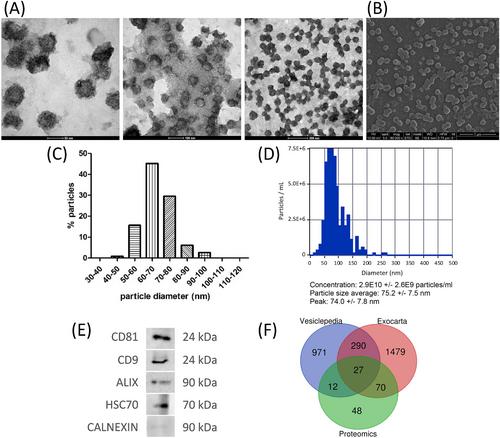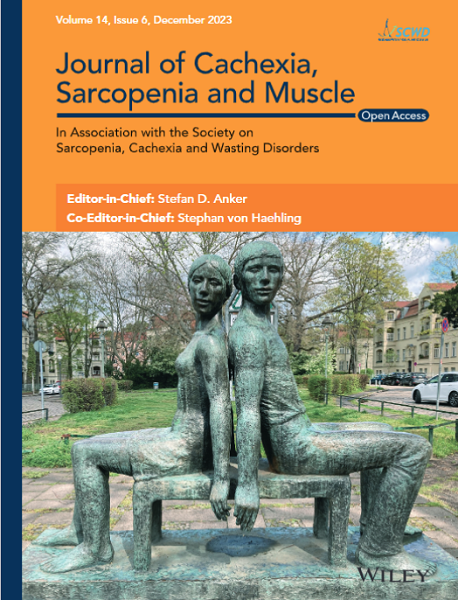Sarcopenia, the gradual and generalized loss of muscle mass and function with ageing, is one of the major health problems in older adults, given its high prevalence and substantial socioeconomic implications. Despite the extensive efforts to reach consensus on definition and diagnostic tests and cut-offs for sarcopenia, there is an urgent and unmet need for non-invasive, specific and sensitive biomarkers for the disease. Extracellular vesicles (EVs) are present in different biofluids including plasma, whose cargo reflects cellular physiology. This work analysed EV proteome in sarcopenia and robust patients in the search for differentially contained proteins that can be used to diagnose the disease.
Plasma small EVs (sEVs) from a total of 29 robust controls (aged 73.4 ± 5.6 years; 11 men and 18 women) and 49 sarcopenic patients (aged 82.3 ± 5.4 years; 15 men and 34 women) aged 65 years and older were isolated and their cargo was analysed by proteomics. Proteins whose concentration in sEVs was different between sarcopenic and robust patients were further validated using ELISA. The concentration of these candidates was correlated to the EWGSOP2 sarcopenia tests for low muscle strength and low physical performance, and receiver operating characteristic (ROC) curve analyses were carried out to evaluate their diagnostic power, sensitivity and specificity.
Proteomic analysis identified 157 sEVs proteins in both sarcopenic and robust samples. Among them, 48 proteins had never been reported in the ExoCarta nor Vesiclepedia databases. Statistical analysis revealed eight proteins whose concentration was significantly different between groups: PF4 (log2 FC = 4.806), OIT3 (log2 FC = −1.161), MMRN1 (log2 FC = −1.982), MASP1 (log2 FC = −0.627), C1R (log2 FC = 1.830), SVEP1 (log2 FC = 1.295), VCAN (FC = 0.937) and SPTB (log2 FC = 1.243). Among them, platelet factor 4 (PF4) showed the lowest concentration while Complement C1r subcomponent (C1R) increased the most in sarcopenic patients, being these results confirmed by ELISA (P = 1.07E-09 and P = 0.001287, respectively). The concentrations of candidate proteins significantly correlated with EWGSOP2 tests currently used. ROC curve analysis showed an area under the curve of 0.8921 and 0.7476 for PF4 and C1R, respectively. Choosing the optimal for PF4, 80% sensitivity and 85.71% specificity was reached while the optimal cut-off value of C1R would allow sarcopenia diagnosis with 75% sensitivity and 66.67% specificity.
Our results support the determination of EV PF4 and C1R as plasma diagnostic biomarkers in sarcopenia and open the door to investigate the role of the content of these vesicles in the pathogeny of the disease.



